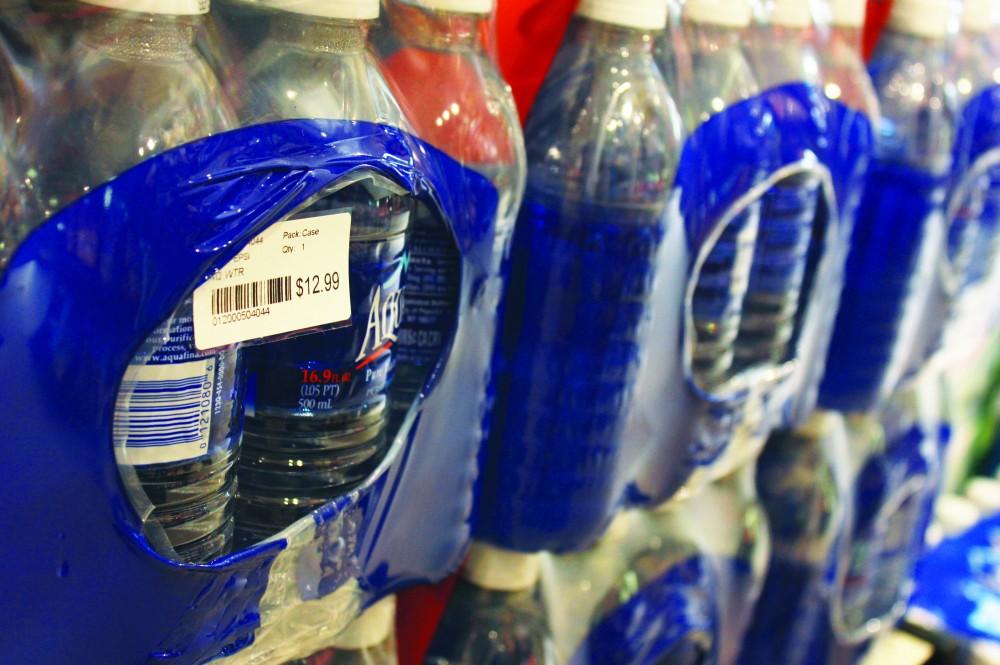C-stores compete with local convenience stores

GVL / Kaitlyn Bowman Students often find goods at campus stores to be over priced.
Sep 30, 2012
The C-stores on Grand Valley State University’s campuses provide an easy stop for students to purchase basic necessities, like a quick energy drink before that 8 a.m. chemistry class, but many cash-strapped college students are finding the prices daunting in the face of more competitively priced grocery stores like Meijer.
GVSU tries to make its prices very similar to local convenience stores like 7/11 and Speedway, said Doug Wentworth, the director of auxiliary services.
“Auxiliary services influence pricing, and we don’t want students to pay more,” Wentworth said. “Campus Dining agreed to make several items the same as local convenience stores to be competitive.”
Items like a bag of Doritos, candy bars and Ben and Jerry’s ice cream all have similar prices between the C-stores and the Speedway in Allendale. Candy bars are both $1.69, a pint of Ben and Jerry’s ice cream is $5.99 at the C-store and $5.79 at Speedway, and a big bag of Doritos is $4.29 at both stores.
“If a student buys 15 items at the C-store or 15 items at a 7/11 or Speedway, the bill at the end will be very similar,” Wentworth said.
He added that last winter semester, an independent, third-party study program with GVSU students conducted a survey of local 7/11 stores to obtain a similar pricing strategy.
“This survey found that last year there were a few areas that weren’t equal, a 20-ounce Gatorade was $1.79 but is now $1.59 to match with 7/11 and Speedway,” he said. “We put a close eye on local convenience stores and mirror them competitively.”
Wentworth emphasized that the prices at C-stores are different from prices at grocery stores like the Meijer in Standale because they are on a different business model. In addition, he said grocery stores get huge trucks in, and, when buying such a large volume, will be able to receive and offer the product at a much lower price.
“The cost of running a convenience store is way different than the cost of running a grocery store,” Wentworth said. “You have to compare apples to apples, different labor costs and operating costs all prices into different models.”
Deb Rambadt, marketing manager at Campus Dining, said the C-stores don’t operate on a specific budget, but Campus Dining operates on a comprehensive program that includes all dining components.
In addition, Rambadt said the prices depend on how much the school spends on C-store items and how much they profit.
“Some products are more costly than others, inventory levels change, and the product mix can be altered,” Rambadt said. “All of these flex factors play a part in comprehensive results.”
Wentworth said a student must consider the benefits and drawbacks of shopping at both a convenience store and a grocery store. If students are just buying a few items, they could save money on gas or save 45 minutes of their time on a bus by going to a C-store on campus.
“A convenience store is meant to be more convenient and quicker, and it costs more to do business,” Wentworth said.
He added that if a student needs to buy a lot of items, it makes sense to go to a grocery store because you can save more money.
C-stores are located in several different locations on campus, including the Kirkhof Center, The Connection, AuSable Hall and Mackinac Hall.
For more information on comparing C-store prices to other stores, visit the website http://gvsu.edu/campusdine/dare-to-compare—97.htm, where common items are compared to other stores such as Starbucks, Biggby Coffee, Meijer C-stores in Standale, and Speedway.





















